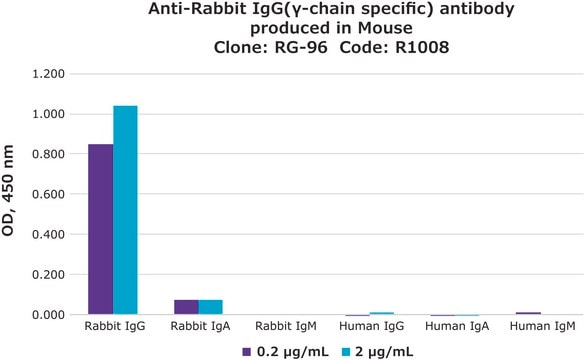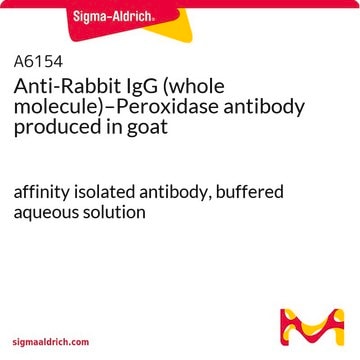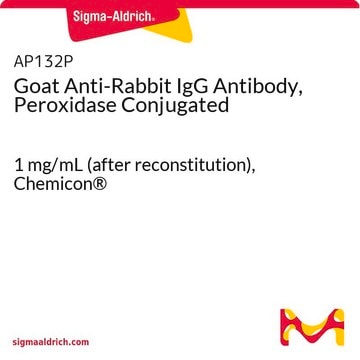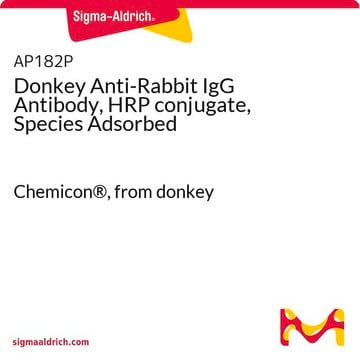A1949
Anti-Rabbit IgG (γ-chain specific)–Peroxidase antibody, Mouse monoclonal
clone RG-96, purified from hybridoma cell culture
Synonym(s):
Monoclonal Anti-Rabbit IgG (γ-chain specific)
About This Item
Recommended Products
biological source
mouse
Quality Level
conjugate
peroxidase conjugate
antibody form
purified immunoglobulin
antibody product type
secondary antibodies
clone
RG-96, monoclonal
form
lyophilized powder
species reactivity
rabbit
should not react with
goat, feline, pig, guinea pig, rat, bovine, canine, human, horse, sheep, chicken
packaging
vial of 0.5 mL
technique(s)
direct ELISA: 1:40,000
immunohistochemistry (formalin-fixed, paraffin-embedded sections): 1:200
western blot: 1:160,000 using total cell extract of HeLa cells (5-10 μg/well)
isotype
IgG1
storage temp.
2-8°C
target post-translational modification
unmodified
Looking for similar products? Visit Product Comparison Guide
General description
Immunogen
Application
- various immunochemical assays like enzyme linked immunosorbent assay (ELISA)
- westernblotting
- immunohistology
- dot immunobinding assay
Physical form
Preparation Note
Disclaimer
Not finding the right product?
Try our Product Selector Tool.
signalword
Warning
hcodes
Hazard Classifications
Skin Sens. 1
Storage Class
13 - Non Combustible Solids
wgk_germany
WGK 2
flash_point_f
Not applicable
flash_point_c
Not applicable
Certificates of Analysis (COA)
Search for Certificates of Analysis (COA) by entering the products Lot/Batch Number. Lot and Batch Numbers can be found on a product’s label following the words ‘Lot’ or ‘Batch’.
Already Own This Product?
Find documentation for the products that you have recently purchased in the Document Library.
Customers Also Viewed
Articles
Review the key factors that should figure in your decision to choose a secondary antibody. Learn about species, subclass, isotype, label, and more.
Our team of scientists has experience in all areas of research including Life Science, Material Science, Chemical Synthesis, Chromatography, Analytical and many others.
Contact Technical Service
















